
2008 997 GT3 White with 3.9L SharkWerks Motor Upgrade & TechArt Noselift Kit
500 HP and better around-town driveability. Those were the main goals with this stealthy 2008 GT3 that came in for a major round of upgrades, including the SharkWerks 3.9L Motor Upgrade with EVOMSit software, custom camshafts, a SharkWerks GT3 Bypass Exhaust system, and TechArt Noselift kit to ease the complications of driving a GT3 around town with its limited front ground clearance.

The car is put on the lift, the rear bumper and heat shields are removed to allow access to the exhaust components:
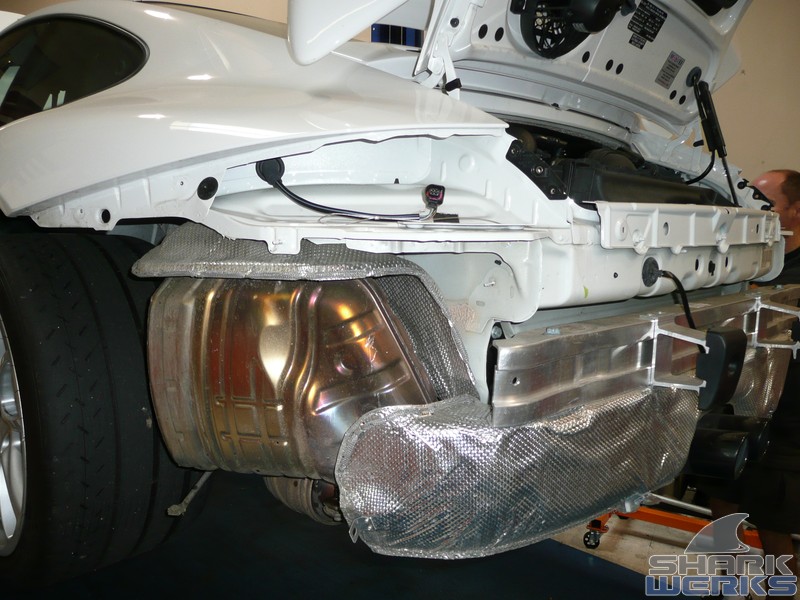
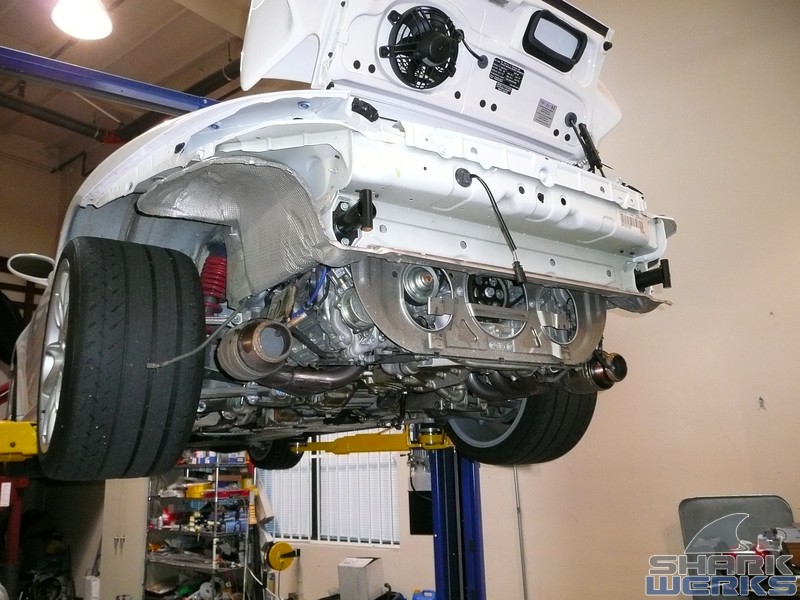
Several components are removed and disconnected in order to drop the motor from its cozy home:
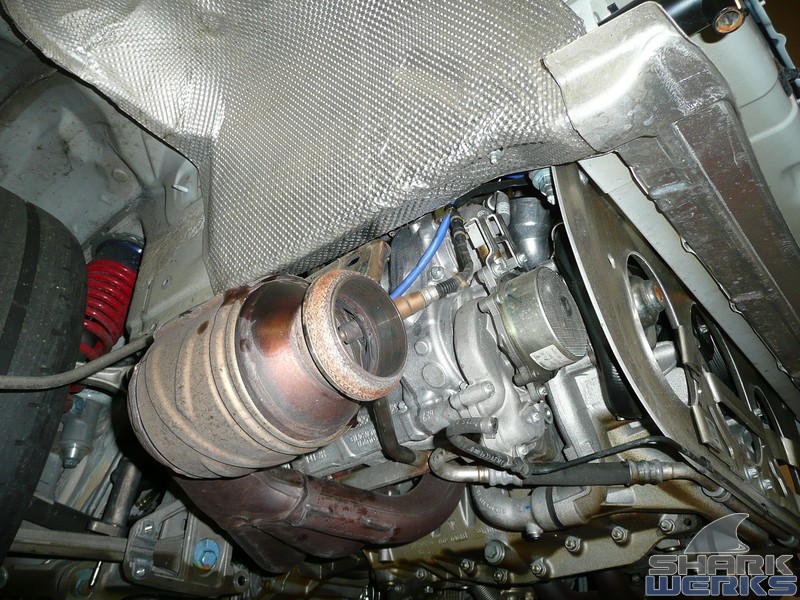
Skipping ahead a bit:
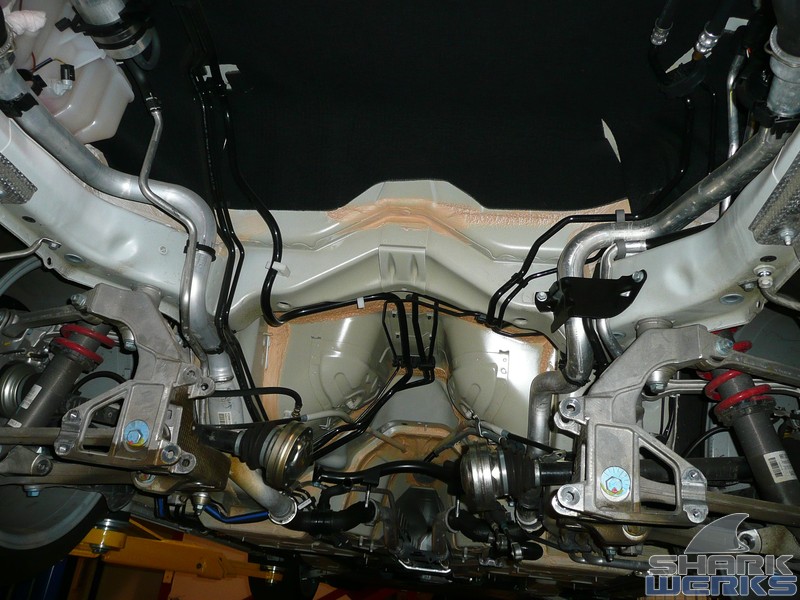
The owner's biggest complaint about his GT3 is that while driving around town, driveways and speed bumps would cause a difficult and expensive encounter, as his OEM plastic front lip was destroyed a number of times, or he would have to hold up traffic while he slowly inched into a parking lot to the dismay of surrounding traffic.
The best solution we've found to this problem to date is the TechArt Noselift Kit, a system that allows you to raise your car at the press of a button by over 2-inches, in around 5 seconds. Here are a couple videos showing this in action:
With the engine out of the car, it was the perfect time to begin on the installation by removing the OEM suspension:
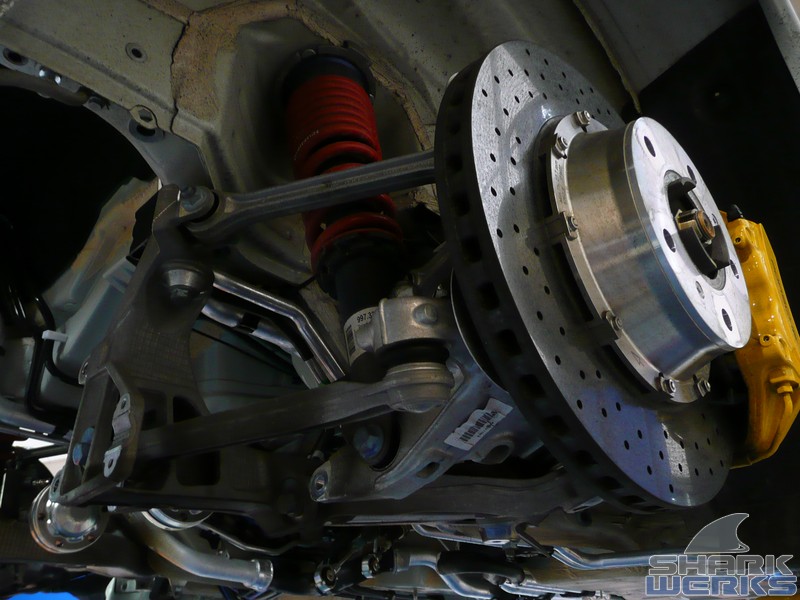
Rear:

The whole assembly is removed from the car:
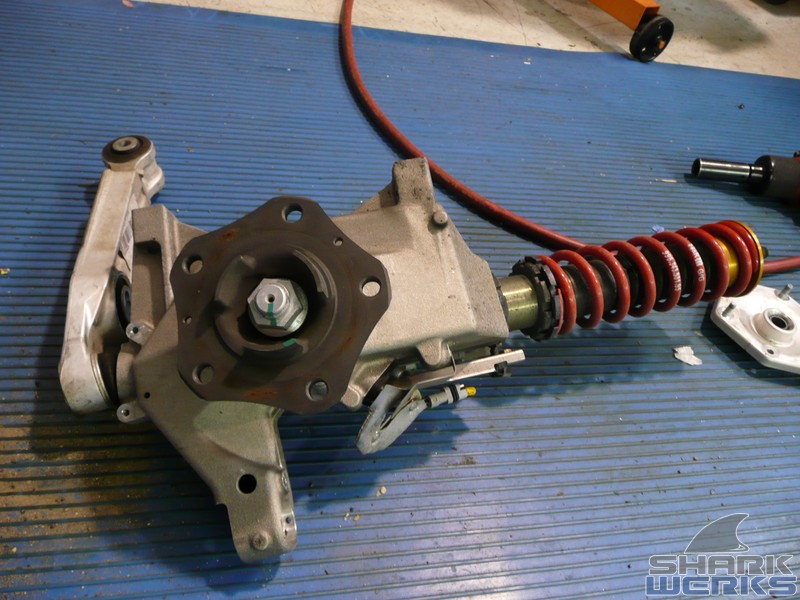
A box of goodies including the TechArt pump and replacement springs:

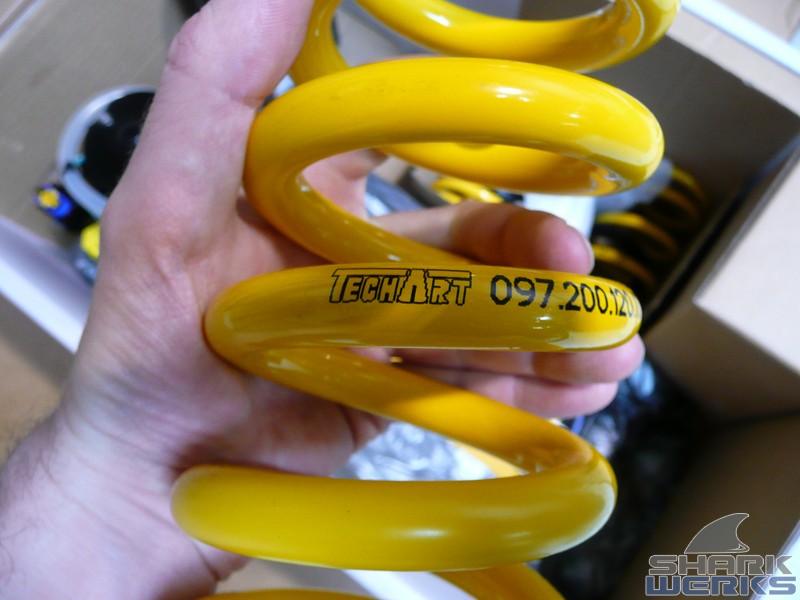

The rear springs are replaced:

And the front includes the Noselift:

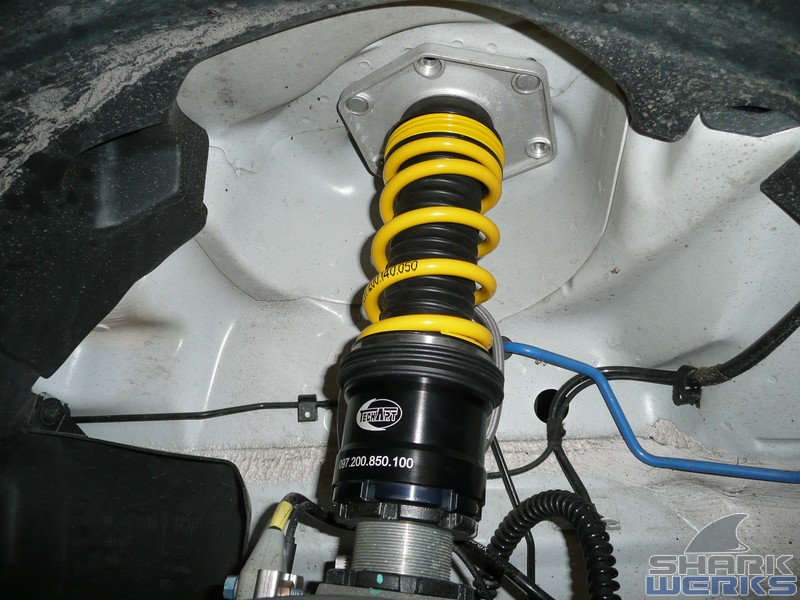
The battery from a GT3 RS model is used with the TechArt compressor, giving a small net gain of only about 10 lbs of weight. Additionally when the Noselift is inactive, the unit becomes a solid spacer and the car rides the same as stock, with no drawbacks.
The button is located in the Homelink system, similar to this:
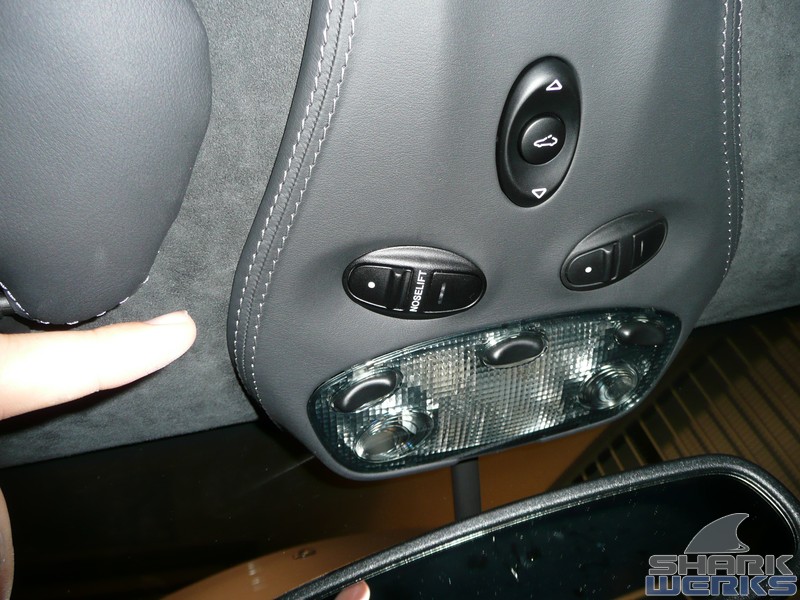
The teardown begins as a second 3.9L motor is being completed a few feet away.

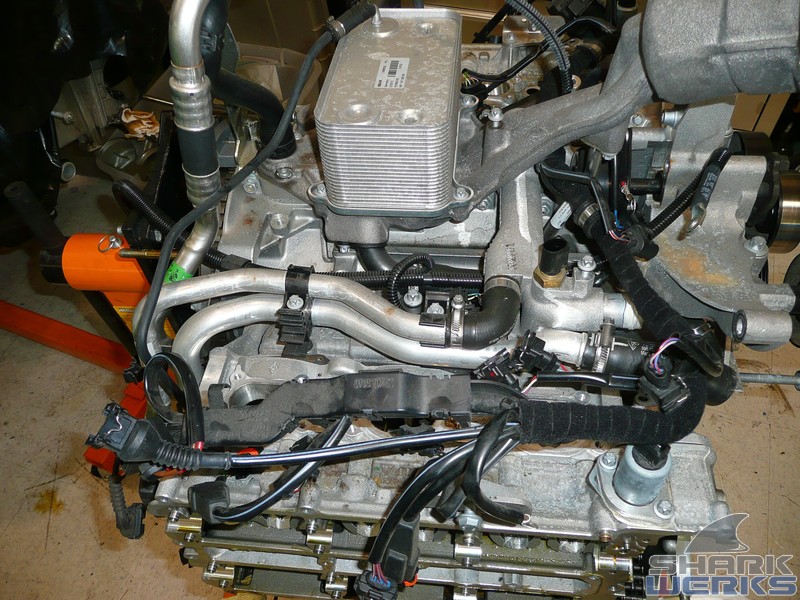
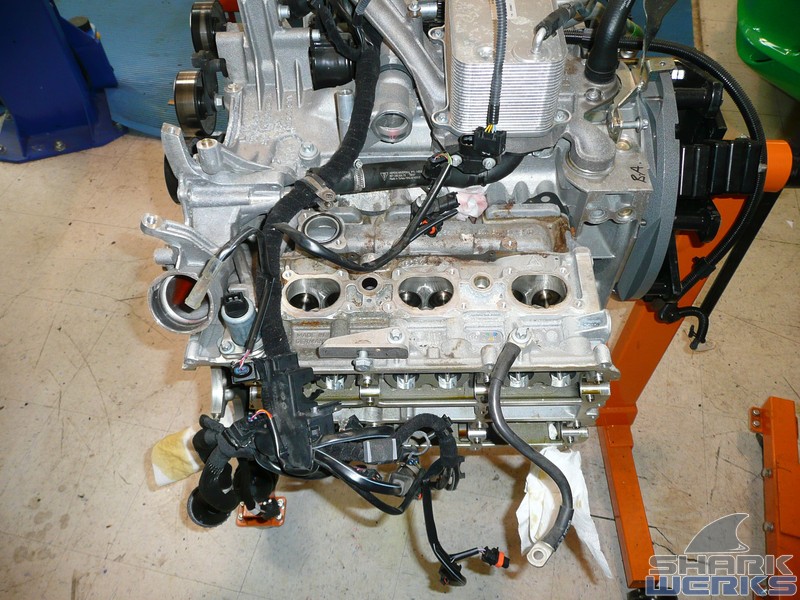
Eventually it looks a bit simpler:
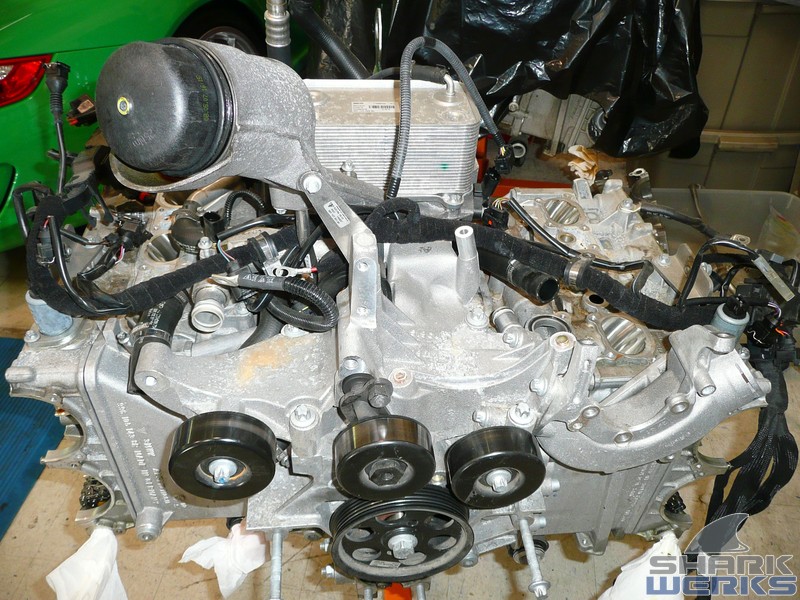
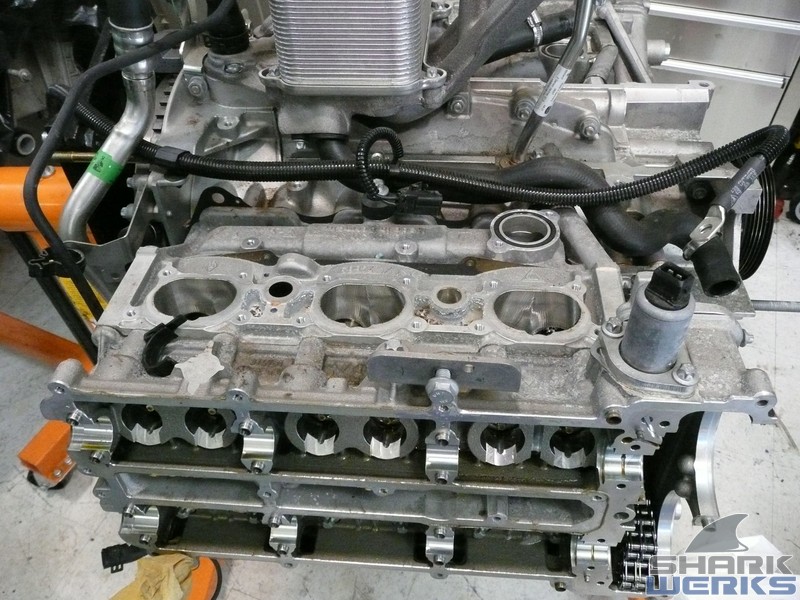
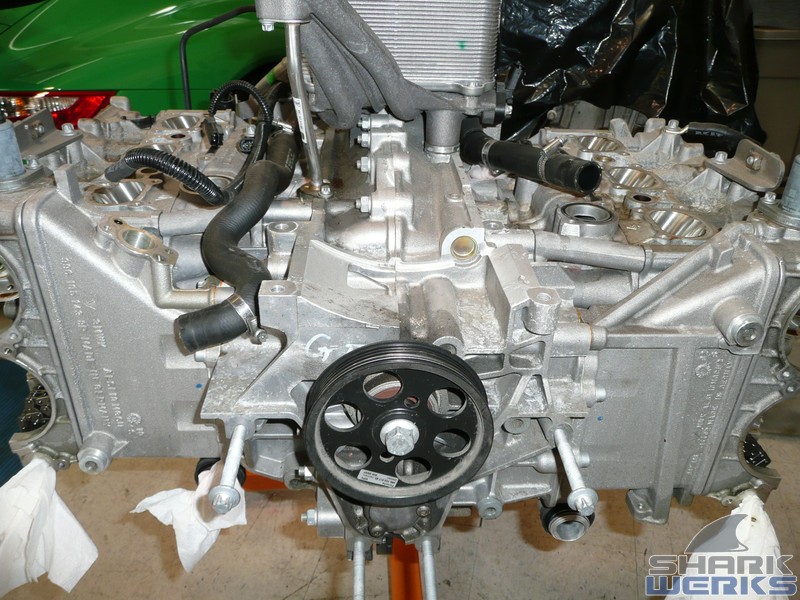
Eventually the original 3.6 pistons are removed:
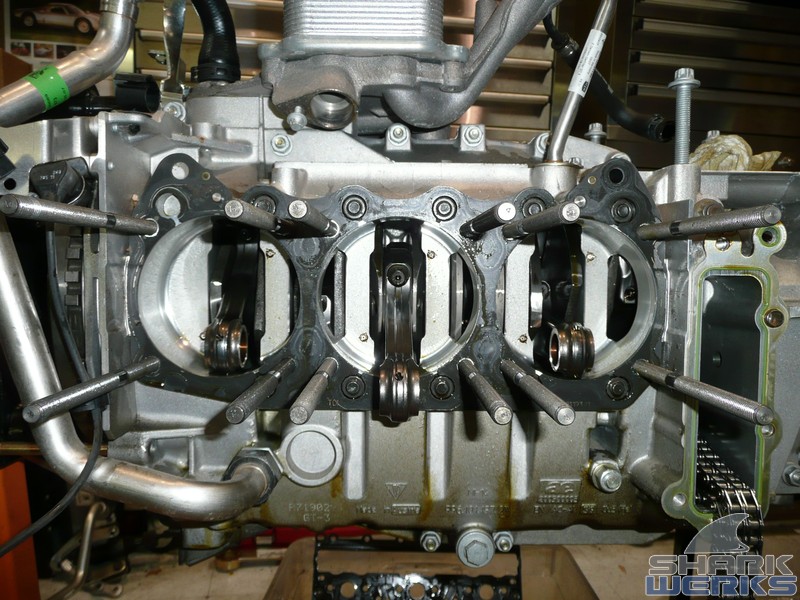
And liners, studs. Next the EVOMS head studs are installed:
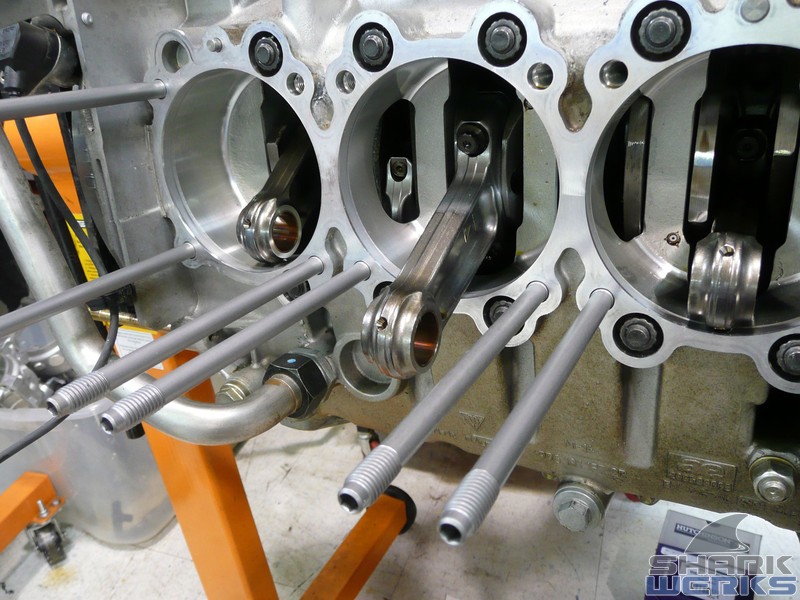
New steel liners are installed into the head to facilitate the larger bore pistons:
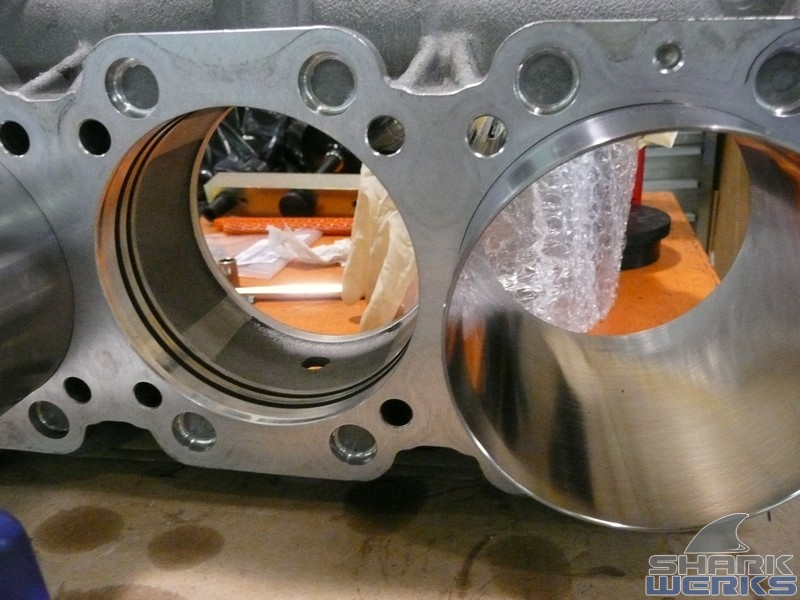
This car had around 12,000 miles when it arrived. The valves and proximity about halfway through clean-up:
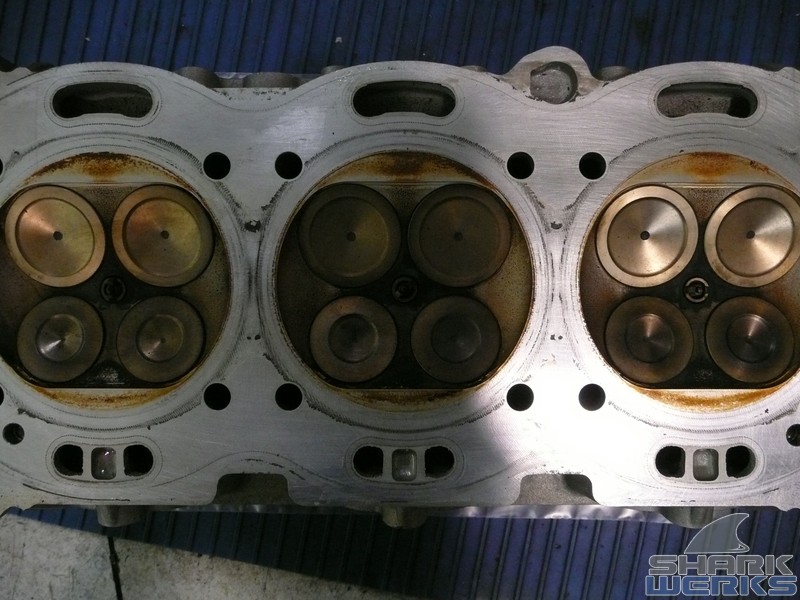
A shot showing most of the components installed:
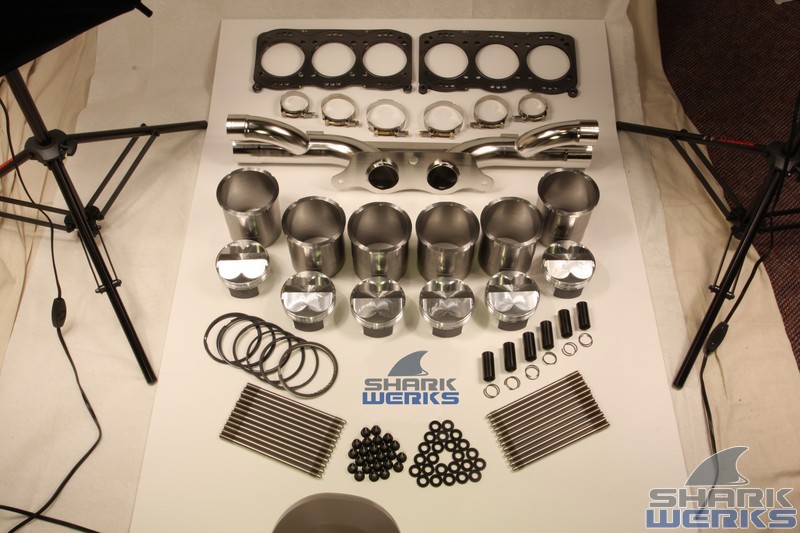
The lighter-than-stock pistons and wrist pins allow even easier revving of the GT3 motor. SharkWerks/Evolution Motorsports custom spec camshafts are also included in the 3.9L upgrade to allow the motor to reach 8800 RPMs and make considerably more power in the top end of the RPM range:
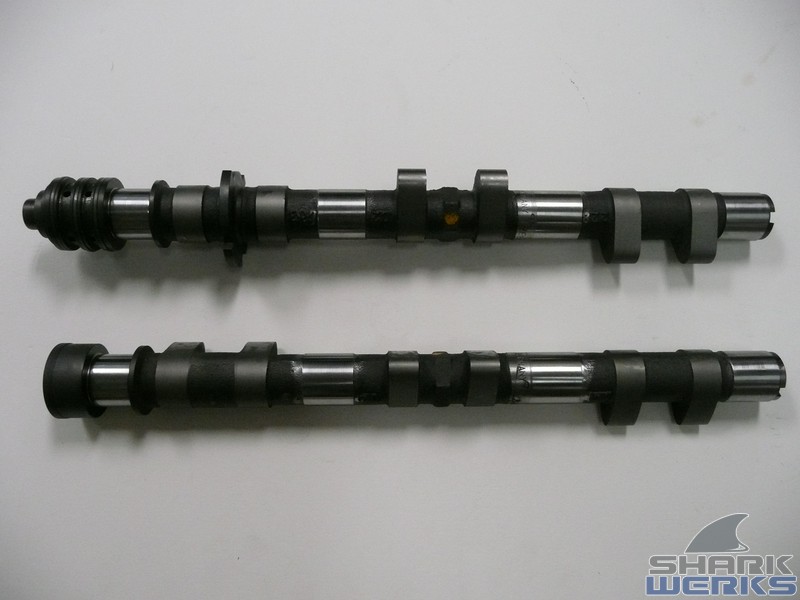
A few layers of secret sauce and James now has the 3.9L pistons installed, along with another layer of the sandwich:
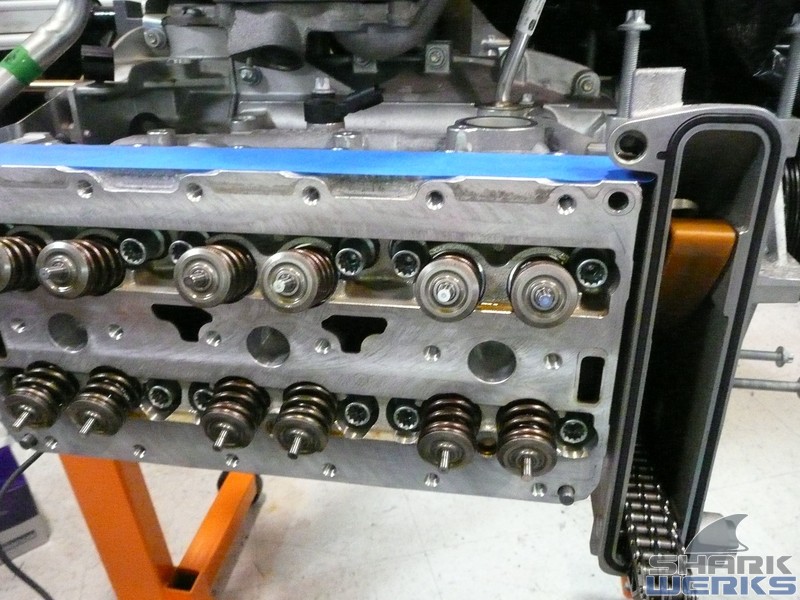
And we can't forget the other bank. :)
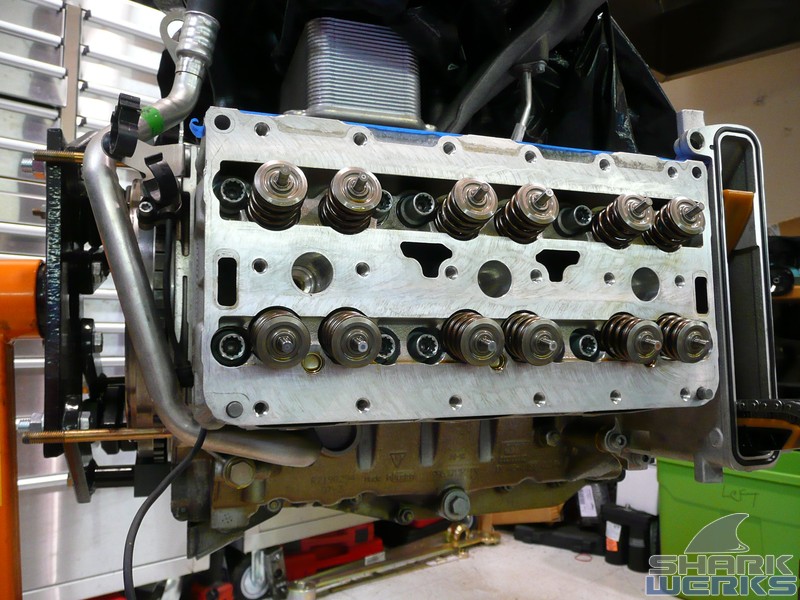
And one more layer before the cams are installed:
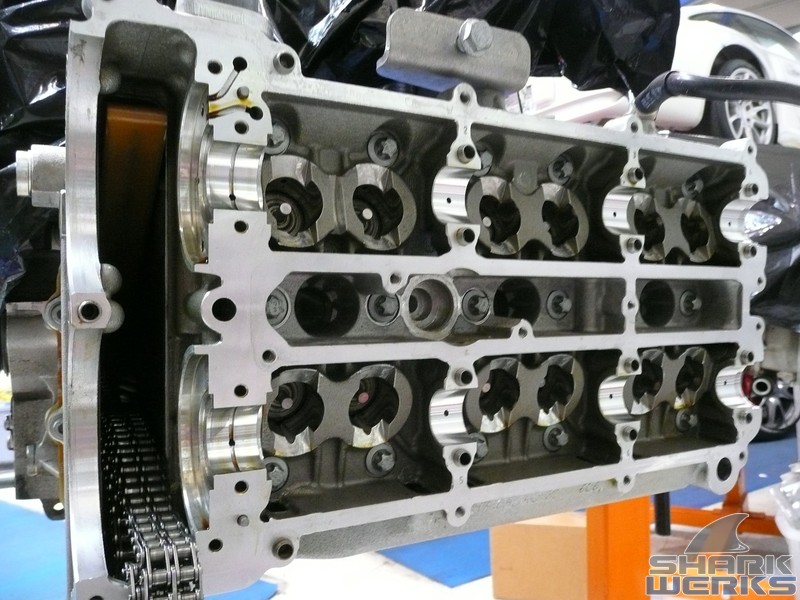
Cams installed:
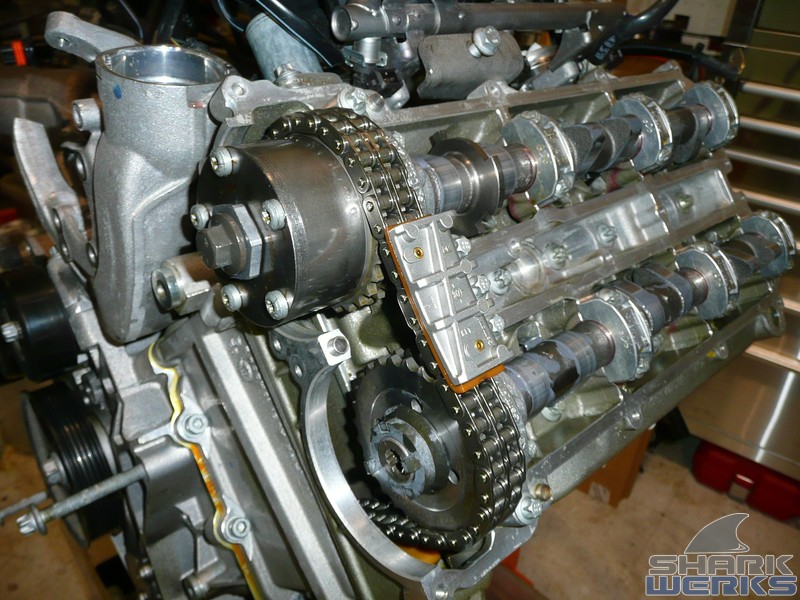
And timed:

James works non-stop until eventually the motor's top end and accessories are mostly reassembled. He has to remove the OEM GT3 crankshaft pulley:

And changes it out for the RS model:

The big beast is now ready to install with an extra 0.3L of displacement and custom SharkWerks/EVOMS camshafts:

The rear main seal is replaced with the 996GT3 version to prevent oil seepage.
James slowly lifts the motor into place, carefully checking for contact and connections every few inches.

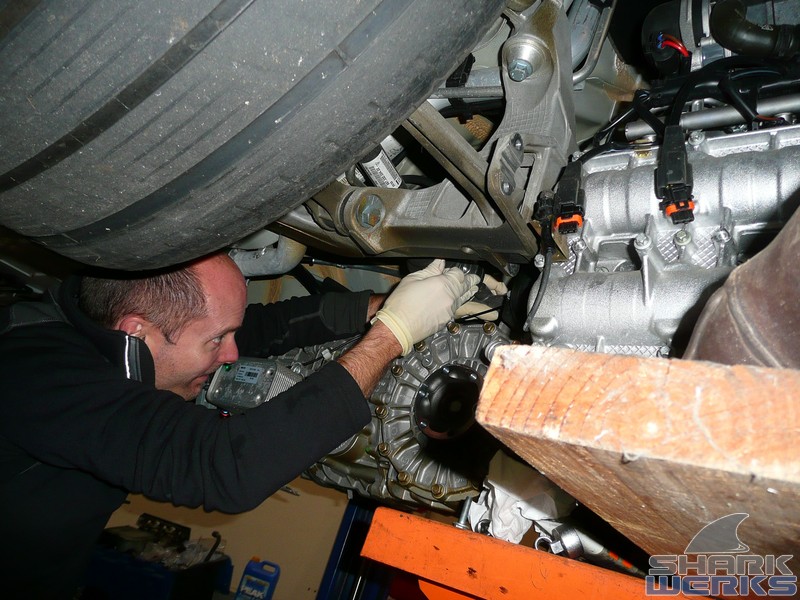

Finally the software is upgraded using EVOMSit's software with a custom tune, designed for this specific motor, displacement, camshafts and California's tragic 91 octane fuel.
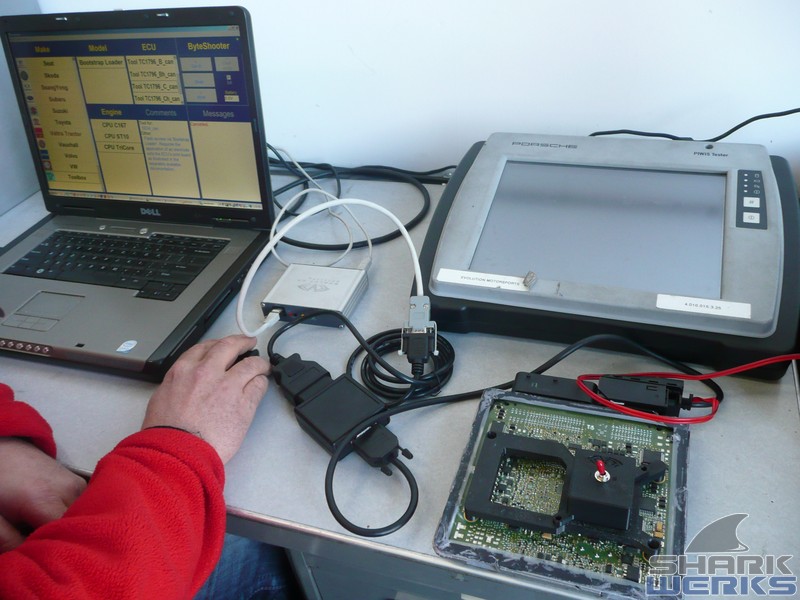
Right before the first start with its new 3.9L motor:
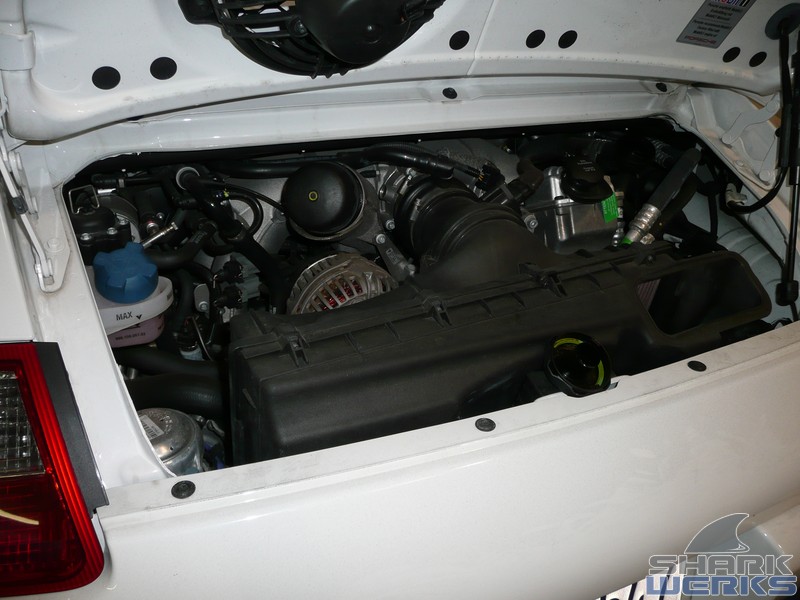
A new decal is put on the decklid to reflect that it's no longer a 3.6!

A video showing the difference in acceleration between a stock GT3RS and the 3.9L equipped GT3RS:
SharkWerks video with more information on the 3.9L including in-depth glimpse of the tuning process:
All completed and ready for a few road trips, with about 250 break-in miles, then it's off to its anxious owner. We recommend putting about 1000 miles on the car before it sees 8800 RPMs, and for the first 250 miles the car does not exceed 6000 RPMs.










































